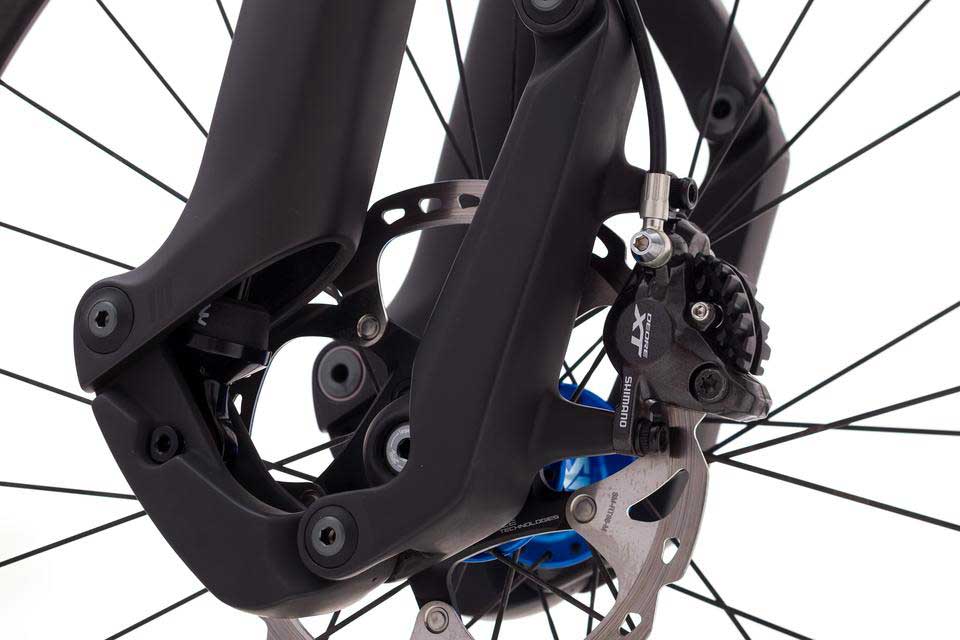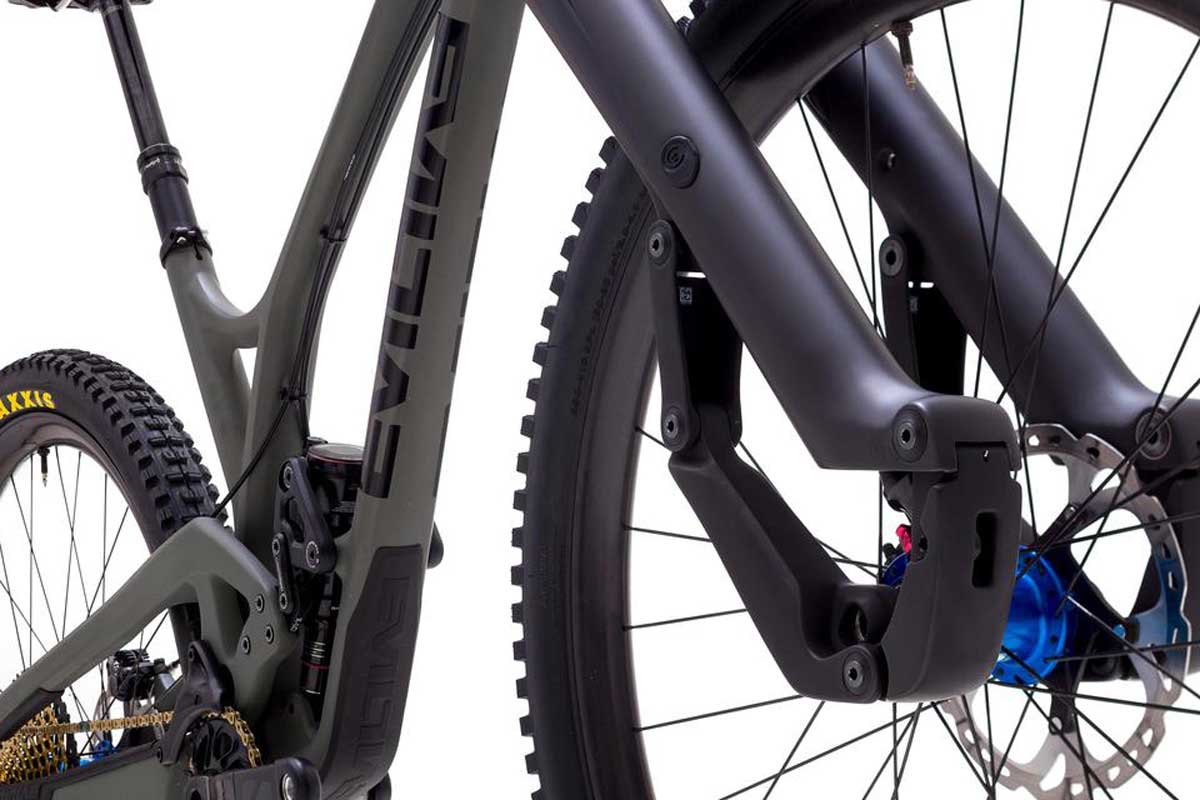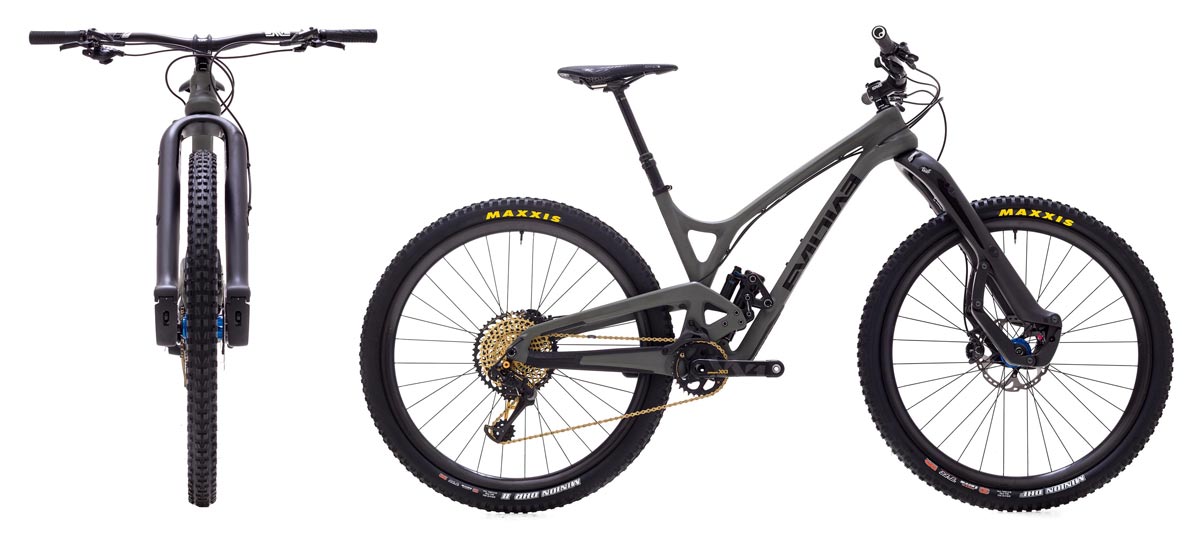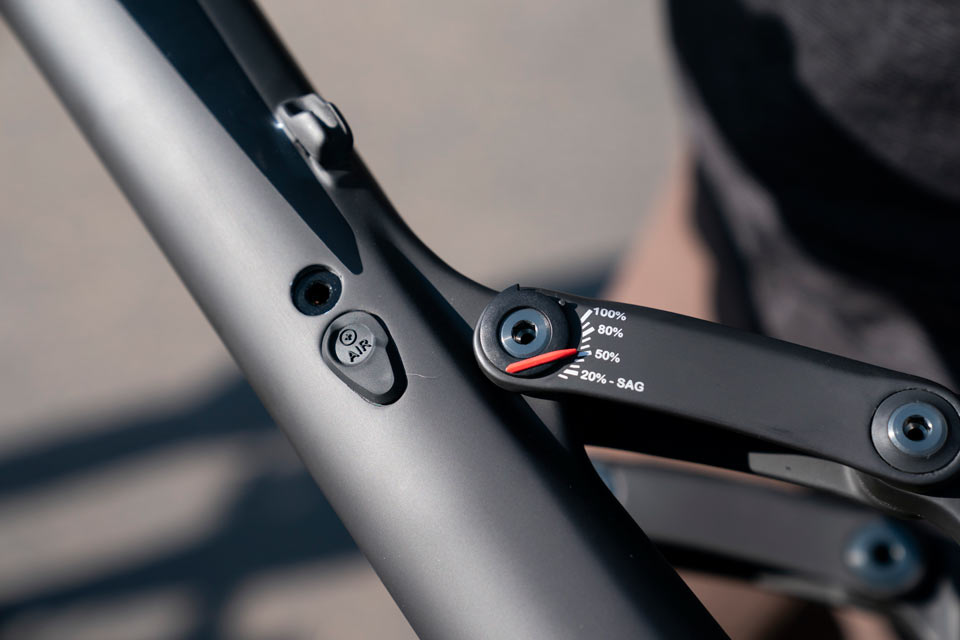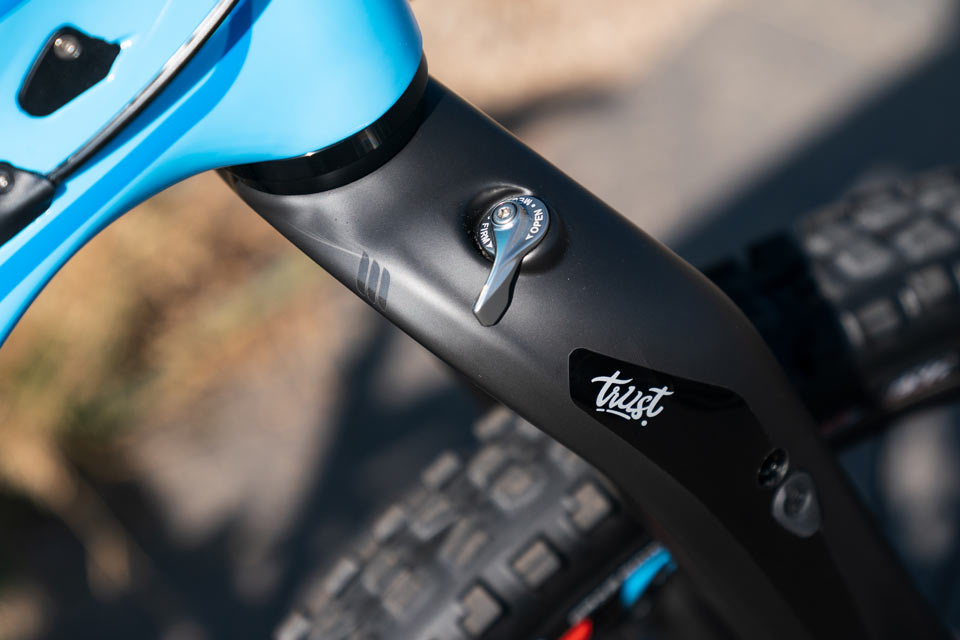Years in the making and remarkably well kept as a secret, Trust Performance’s all-star crew has just introduced their first product, The Message. It’s a trailing multi-link front suspension fork, and the design comes from a collaboration between suspension guru Dave Weagle, carbon master and original ENVE founder Jason Schiers, and all-around go-getter and Competitive Cyclist founder Hap Seliga. Over the past few years, some longer than others, each of them has branched off to do their own thing, but came together to launch what they’re calling the next generation of mountain bike front suspension.
Now that your eyeballs are sufficiently warmed up, here’s the quick specs:
- 29er/27.5+ or 27.5″
- 130mm travel
- 535mm Axle-to-Crown
- Twin-tube thru-shaft damper
- Trailing Multi-linkage
- Full carbon chassis, steerer and links
- Boost 15×110 axle, Torque Cap compatible
- 180mm post mount front brake rotor
- Fits 29×2.6 or 27.5×2.8
- Fits standard tapered steerer tubes
- 250 hour service interval
- Lifetime bearing warranty
- 1,980g
- Retail price of $2,700
- Available now
If that price-that’s-more-than-some-carbon-full-suspension-framesets didn’t scare you away, let’s dive into the details…
“The Message stems from a desire to answer a question that had plagued me for quite some time: Why does the rear suspension on every bike and motorcycle I’ve owned or designed always feel better than the front?” says Founder and Technical Director, Dave Weagle, via press release. “What would happen if I designed a device that increased front end stability while riding rather than decreased it? Is the ride better? Is it worse? Or does it just not matter? After building and riding a number of prototypes, the answer became very clear — it’s a lot better; I realized that I had to start Trust Performance.”
Rather than a straight axle path of a traditional telescoping fork, The Message contours the axle path to move both up and away from the obstacle. And since it’s using a lever to compress the “shock”, they’re able to tune the leverage ratio along with the damping circuit to fine tune the performance. Does this mean we’ll soon have to ask “What’s that fork’s leverage ratio?” Maybe.
Why add this complexity to the front of the bike? “The performance of the Message allows the front end of the bike to reap the benefits that rear suspension designs have enjoyed for years — supple performance early in the stroke, supported with a progressive mid-stroke and more bottom-out resistance at the end of the travel,” adds Trust Performance Co-Founder and President Jason Schiers. “One of the main goals in creating the Message was centered around the ease of setup. By simply using the rider’s weight, your front suspension can be set up to optimal performance in a matter of seconds.”
The other benefit is that the suspension parts are no longer doubling as structural parts, so their movement can be optimized for reduced stiction.
Lastly, it corrects for running a slack head angle with short offset, a trend among modern mountain bikes for everything from XC to Trail to Enduro. The goal with those designs is to increase stability and downhill prowess without totally scrapping the quick handling needed in tight trails.
The Message approaches it differently. It still pushes the axle out front a bit, but relies on the levers to tune the caster angle throughout the travel. This has the effect of changing the “trail” throughout it’s travel range, which lets them control how it will handle at every point in the compression.
An external travel indicator shows your sag…and travel – it’ll stay at the deepest compression point. Not only does it show how much “fun” you just had, it also makes it easy to set the sag without a helper to push an O-ring down.
It has independent air springs on in both legs, which must be filled separately and evenly. The valve is positioned under a cover midway down and has a tooled plug you need to remove before threading on your pump. While those are extra steps compared to other forks, sag set up should be easy – they recommend starting with your body weight (in pounds) as the PSI, then tweaking +/- 10psi from there.
From there, you can also use the eight included “Huck Pucks” air volume spacers to tune the air chamber size.
The fork gets multiple external compression adjustments. On the top is a three position adjuster that moves between Open, Medium and Lockout. Farther down on the side of the leg are the fine tuning adjustments for Open and Medium. These let you tweak each of those settings to better suit local trails, riding conditions and your personal style.
…and rebound adjustments. The fork comes with a very graphical, user-friendly manual with recommended starting settings for all of the adjustments based on your weight and the air pressure setting.
The first batch of 2,500 forks is in stock and ready to ship, first come, first served.


